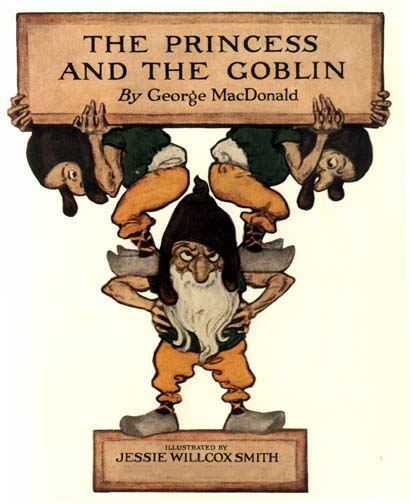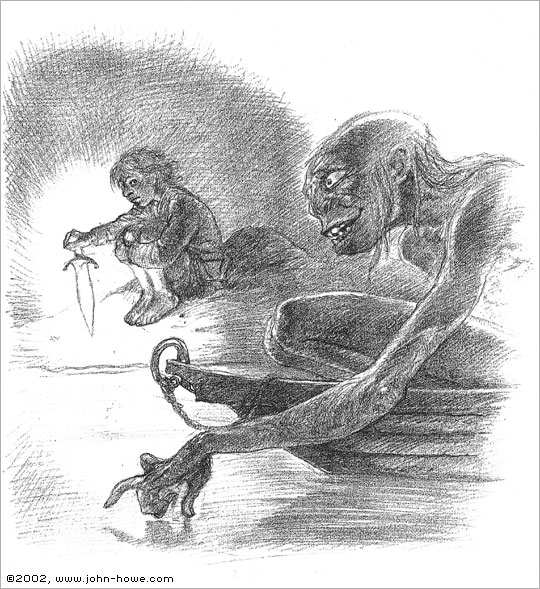Part One: Similarities
"Speaking of the history of stories and especially of fairy-stories we may say that the Pot of Soup, the Cauldron of Story, has always been boiling, and to it have continually been added new bits, dainty and undainty. "
-J.R.R Tolkien in On Fairy Stories
 Tolkien's mythology of Middle Earth is undeniably and fascinatingly unique. But Tolkien himself might be the first to tell you that his stories could not have been brewed without first sipping from what he called the Cauldron of Story. This now relatively famous analogy describes timeless story elements as having "been put into the Cauldron, where so many potent things lie simmering agelong on the fire" (OFS,10). The elements that make a good fairy story simmer together and when each Cook dips his ladle into the pot, more and more ingredients are added.
Tolkien's mythology of Middle Earth is undeniably and fascinatingly unique. But Tolkien himself might be the first to tell you that his stories could not have been brewed without first sipping from what he called the Cauldron of Story. This now relatively famous analogy describes timeless story elements as having "been put into the Cauldron, where so many potent things lie simmering agelong on the fire" (OFS,10). The elements that make a good fairy story simmer together and when each Cook dips his ladle into the pot, more and more ingredients are added. One 'Cook' Tolkien openly admired around the time The Hobbit was written and published was George MacDonald, author of, among many other great works, The Princess and the Goblin. In On Fairy Stories Tolkien observes that MacDonald achieves "stories of power and beauty when he succeeded...and even when he partly failed" (OFS, 9). A high accolade from such masterful storyteller, and not the only one either. There are several more moments throughout Tolkien's early career where he applauds MacDonald not only as a great fairy tale writer but as a source of inspiration. In a 1954 letter Tolkien writes that his goblins "owe, I suppose, a good deal to the goblin tradition...especially how it appears in George MacDonald" and that they" do to some extent resemble" MacDonald's (Annotated Hobbit, 108). And earlier in a 1938 letter he states that while his sources do not include victorian fairy tales, "George MacDonald is the chief exception" (History of The Hobbit, 140).
The Princess and the Goblin is a great book and its easy to see what Tolkien admired in it. On the surface it is a story about (you guessed it) what happens when a young princess leaves the castle and unexpectedly explores the underground world of the Goblins. But of course, it's much more than that. It's a novel that explores and challenges what we think of magic, faith, belief, and love. And, like so many great works of literature, it is an exploration of what makes us human. The goblin race in The Princess and the Goblin has a big role in that exploration. In the opening chapter they are described as "a strange race of beings, called by some gnomes, by some kobolds, by some goblins. There was a legend current in the country that at one time they lived above ground, and were very like other people" (PatG, 2). Outraged at the treatment they were getting from the King (high taxes and strict laws, some say) they turned their backs to the sun and drove themselves underground, where they became physically and mentally transformed. Throughout the novel the goblins are cunning, mischievous, and strong. They seek "every opportunity of tormenting" (PatG, 5) the above humans and even come close to overtaking the entire castle.
 |
| Artist: Alan Lee |
For both George MacDonald and J.R.R. Tolkien it seems the ultimate evil and the most pitiable sort of creature is the corrupted; the creature that is turned away from his fellow peers, not by their influence, but by his own twisted, corrupted desires.
 |
| Artist: John Howe |
Part 2 will explore some of the major differences between the goblin race in The Princess and the Goblin and The Hobbit. In the meantime further ideas and questions are always welcome!
MacDonald, George. The Princess and the Goblin. London: Puffin Books, 2011. Print.
Olsen, Corey. Exploring J.R.R. Tolkien’s The Hobbit. Boston: Houghton Mifflin Harcourt. 2012. Print.
Tolkien, J.R.R. The Annotated Hobbit: The hobbit, or, There and back again. An. Douglas Anderson.Boston: Houghton Mifflin Company. 2002. Print.
Tolkein, J.R.R. Ed. Christopher Tolkien. The Monsters and the Critics. London: Harper Collins Publishers, 1983. Print.
Rateliff, John. The History of The Hobbit. Part One: Mr. Baggins. Boston. Houghton Mifflin Company. 2007. Print.

Wow, I really must read PatG...your description of it has made me wonder whether it is the influence for 'Tom Underground' by A.S. Byatt's writer-mother character in 'The Children's Book'. There are lots of subtle references to writers and fairy tale works of the Victorian era in there, and I'm now thinking this was one reference I didn't pick up on!
ReplyDeleteAnd I love this 'Cauldron of Story' idea! (Particularly the fact that he uses 'cauldron' rather than 'saucepan' or anything more mundane!) It's such a nice way of describing how current writers are influenced by past writers, particularly in the way it acknowledges putting into the cauldron and not just taking out. I much prefer to imagine writing is like this than simply rehashing one of the few archetypal stories~
That's funny, I just picked up The Children's Book at work the other day and thought about reading it. How do you like it? I haven't read any of Byatt's work yet, so I'm not sure if Princess and the Goblin is an influence, but it sounds very likely.
ReplyDeleteI love the Cauldron of Story idea too. 'On Fairy Stories' is chock full of really wonderful and insightful ideas about story writing and reading. There's so much to absorb.
If you have the time, here's a link to the lecture: http://bjorn.kiev.ua/librae/Tolkien/Tolkien_On_Fairy_Stories.htm
It's long but excellent if you're in the mood to read that sort of thing.
Huh. I'd never thought about Tolkien's goblins resembling MacDonald's, but that makes sense. That's especially interesting given MacDonald's treatment of humanity to goblinhood as a sort of continuum, which is--as you pointed out--shown in The Princess and the Goblin. It's further fleshed out in the sequel, The Princess and Curdie, which I especially liked for just that reason.
ReplyDeleteAnd I've always loved that 'Cauldron of Story' analogy, too. :)
Great article - looking forward to reading Part 2. I think it's interesting how both Tolkien and MacDonald (and loads of other writers as well) have used goblins so explicitly to make social commentaries (or really just moral commentaries). Not every fairy race is used like this in literature, so there seems to be something special about goblins. By the way, I've been reading The Children's Book on and off ever since it came out. I find it enchanting (particularly when the fairy elements come to the forefront) but so rich in language and narrative environment that I never feel like reading much at one time and am always going back to re-read favorite passages. The book is not a fairy story, but it is a beautiful text.
ReplyDeleteAlso, I thought you might enjoy having a look at my blog, The Black Dionysia, which is a piece of imaginative fiction heavily influenced by classic fairy tale and mythology. I'd love to hear your thoughts on some of the fairy story elements.
Thanks Edward! And that's very interesting- I think other fantastic or mythological creatures are part beast, part human and thus offer a different ideas towards humanity. But creatures like goblins or elves (being more humanlike in nature) are easier to use to portray the lowest and highest aspects of humanity.
ReplyDeleteI checked out your story, I'll have to start from the beginning soon; I'm very intrigued!